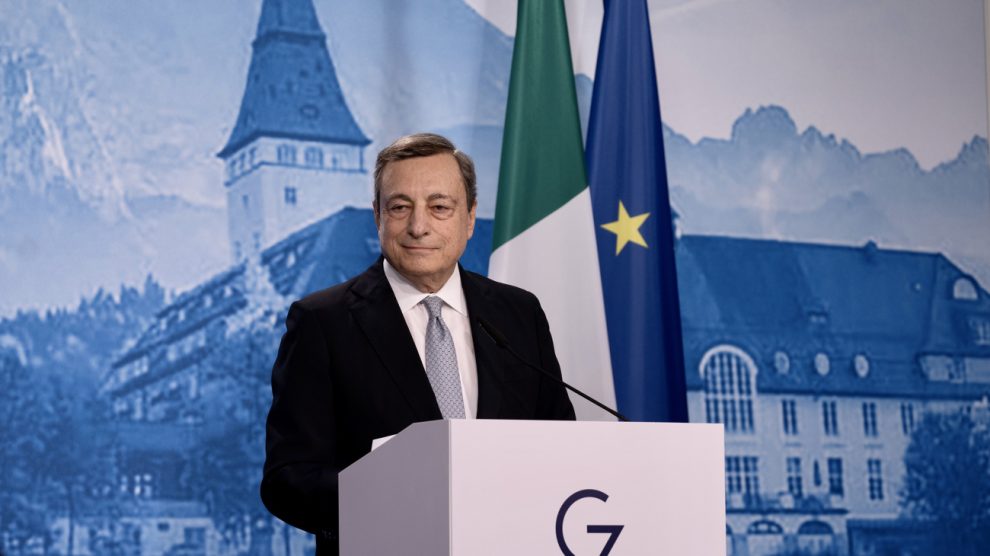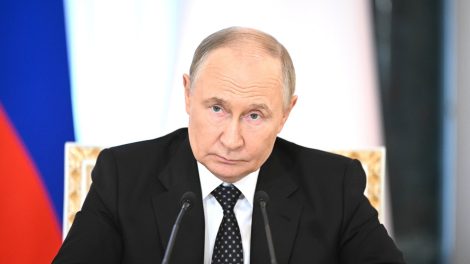Italian Prime Minister Mario Draghi has the highest approval rating of all G7 leaders, maintaining a net positive rating in the past few weeks, filled with key international meetings at the EU level, G7, and NATO. But at home, PM Draghi is trying to contain a new crisis that forced him to skip the last day of the Atlantic Alliance summit in Madrid to return to Italy.
A heated summer for Mr Draghi. The crisis in Italy broke out last week, when foreign minister Luigi Di Maio split with the party he once led, the 5-Star Movement, after its new leader, former Prime Minister Giuseppe Conte, positioned the party to vote against sending any military aid to Ukraine.
- According to analysis firm Morning Consult, in the past seven days, PM Draghi scored a 48% approval rating, against a 46% disapproval (net +2).
- The Italian Prime Minister had a 52% approval rating last week (+11 net compared to the previous week), when the crisis first erupted.
- While still in the green, his ratings in the past few weeks are far from the peak of 67% in June-July last year. Mr Draghi’s disapproval rating in the summer 2021 was less than 30 percent.
Is PM Draghi at risk? “The government is not at risk,” Mr Draghi said before leaving the NATO Summit to return to Rome for a cabinet meeting.
- Mr Conte is alleging that the PM has asked 5-Star founder, comedian Beppe Grillo, to remove him as the party leader, a claim that Mr Draghi’s office is strongly denying.
- Mr Conte is accusing Mr Draghi of “interfering in the internal matters of a party that supports him.”
- PM Draghi’s ruling coalition has also been bruised by poor local electoral results for both the 5-Star and the League, whose support is needed to maintain a majority in Parliament— general elections are scheduled for next year.
How does Draghi compare to other leaders? The PM was the only G7 leader heading to the G7 summit in Germany and to the NATO meetings in Spain with a net positive approval rating (+2 this week, and +11 last week).
- The lowest drop in approval ratings was British Prime Minister Boris Johnson, with 26% approval (the lowest in the G7 countries), against a whopping 68% disapproval (-42 net).
- Following PM Johnson are Emmanuel Macron of France (32% approval), German Chancellor Olaf Scholtz (34%), and US president Joe Biden (38%).
- France, Germany, and the US have score nets all in the red, respectively of -29, -25, and -17.
- Canada and Japan are both above the 40% threshold approval, with Justin Trudeau at 42% (-11 net) and Fumio Kishida at 40% (-4).
Why does it matter? World leaders are using the current international conjuncture—a prolonged war in Ukraine, high energy prices and inflation, domestic political instability—to boost their approval at home, in particular on key foreign policy messages like Ukraine, Russia, China, as well as the economy and the pandemic.
- Not surprisingly Prime Minister Magdalena Andersson of Sweden, together with Finland embarking on a journey to join NATO, is the leader in the Atlantic Alliance with the highest approval rating at 54% (Finland was not polled).
- Outside of the G7 and NATO, the leaders with the highest approvals are Prime Minister Narendra Modi of India (73% rating and +51 net), and President Andrés Manuel López Obrador of Mexico (65% and +39 net).




